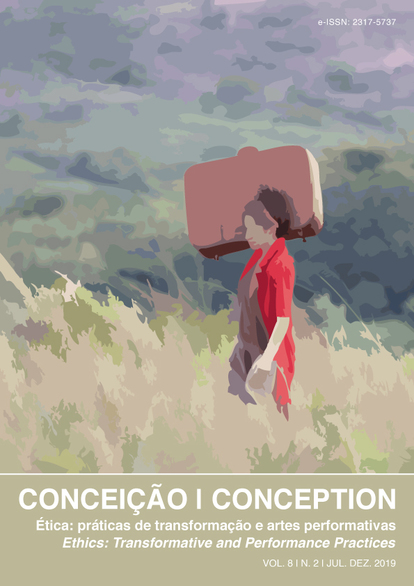Resumo
O artigo aborda contribuições da educação somática para a revisão de práticas de ensino da dança e as implicações éticas desse processo. A educação somática é vista como tecnologia de si e como fonte de saber capaz de alterar relações de poder no âmbito da dança. Desse modo, tem contribuído para a educação em dança como prática da liberdade, ao promover autoconhecimento e consciência crítica.
Referências
BANES, Sally. Terpsichore in sneakers: post-modern dance. Middletown: Wesleyan University Press, 1987.
BEAVERS, Wendell. Re-locating technique. In BALES, Melanie; NETTL-Fiol (Eds.). The body ecletic: evolving practices in dance training. Urbana and Chicado: University of Illinois Press, 2008.
CORRÊA, Josiane Franken; NASCIMENTO, Flávia Marchi. Ensino de dança no Rio Grande do Sul: um breve panorama. Conceição, Campinas, SP, v. 2, n. 2, p. 53-68, jul./dez., 2013.
EDDY, Martha. Mindful Movement: the evolution of the somatic arts and conscious action. Chicago: Intellect, 2016.
FORTIN, Sylvie; VIEIRA, Adriana; TREMBLAY, Martyne. The experience of discourses in dance and somatics. Journal of Dance and Somatic Practices vol. 1, nº 1, Intellect Ltd, 2009.
FORTIN, Sylvie. Transformação de práticas de dança. In: BEL; Jerome et al. Lições de Dança IV. Rio de Janeiro: UniverCidade Editora, 2003.
FORTIN, Sylvie; LONG, Warwick; LORD, Madeleine. Three Voices: researching how somatic education informs contemporary dance technique classes. Research in Dance Education, Vol. 3, No. 2, Taylor & Francis Ltd, 2002.
FOSTER, Susan Leigh. Dancing bodies. In DESMOND, Jane. Meaning in motion: new cultural studies of dance. London: Duke University Press, 1997.
FOUCAULT, Michel. Tecnologias de si (1982). Verve, nº 6, p. 321-360, 2004.
FOUCAULT, Michel. Noam Chomsky ft Michel Foucault : el poder. Disponível em: https://www.youtube.com/watch?v=V6CiCbBxg7c&t=199s, 1971.
FREIRE, Paulo. Educação como prática da liberdade. Rio de Janeiro: Paz e Terra, 2009.
GREEN, Jill. Social Somatic theory: issues and applications in dance pedagogy. Revista Científica/FAP, Curitiba, n. 13, p. 65-76, jul./dez., 2015.
GREEN, Jill. Student bodies: dance pedagogy and the soma. In: BRESLER, L. (Ed.). International Handbook of Research in Arts Education, p. 1119-1132, 2007.
GREEN, Jill. Foucault and the Training of Docile Bodies in Dance Education. Arts and Learning Research Journal, vol. 19, n.1, 2002.
LEPECKI, André. Introduction. In LEPECKI, André (Ed.) Dance: documents of contemporary art. Cambridge: The MIT Press, 2012.
MARKULA, Pirkko. Tuning into One’s Self: Foucault’s Technologies of the Self and Mindful Fitness. Sociology of Sport Journal, nº 21, 302-321, 2004.
QUILICI, Cassiano Sydow. As técnicas de si e a experimentação artística. Revista do Lume, Campinas, n.2, p. 1-8, 2012.
ROSA, Tatiana Nunes da. O termo educação somática perspectivado pela criação em dança no Brasil. Caderno GIP-CIT, Salvador, ano 20, nº 36, vol. 1, 2016.
TODD, Mabel Elsworth. The thinking body: a estudy of balancing forces of dynamic man. New York: The Gestalt Journal Press, 1937.

Este trabalho está licenciado sob uma licença Creative Commons Attribution-NonCommercial-ShareAlike 4.0 International License.
Copyright (c) 2019 Juliana Carvalho Franco da Silveira


